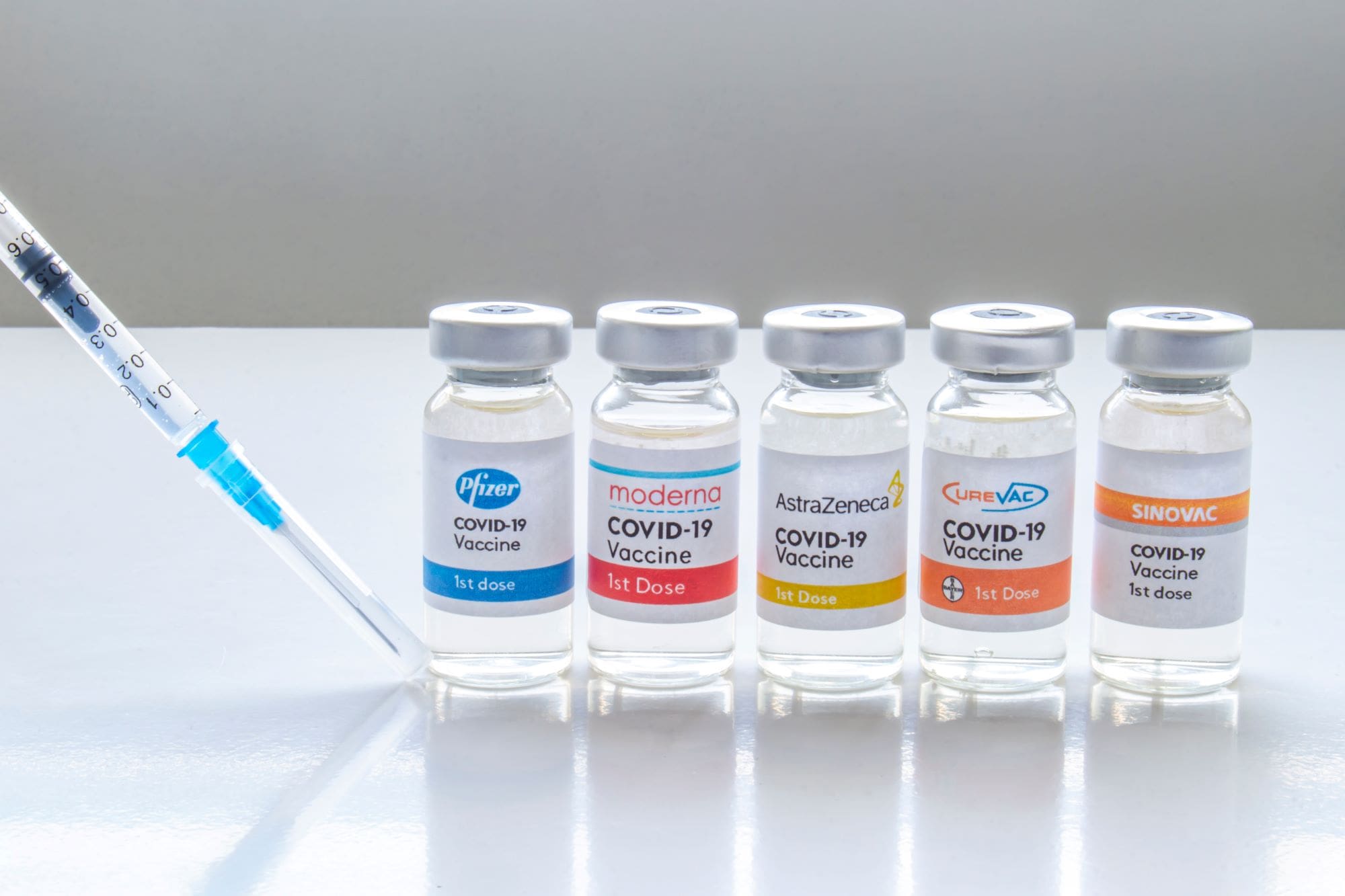

Why Does the UKHSA Vaccine Surveillance Report Never Mention Side-Effects?
In the past few months I’ve read newspaper articles warning of the increased risk of death following gardening, stress at work, solar flares, sleeping in front of the television, hot weather, cold weather, shock of high energy bills, the price of food, laughing too much and sleeping in the wrong position – these recent warnings add to the multitude of stories on the health consequences of our dietary choices, sedentary lifestyle and climate change. If that wasn’t scary enough, we’ve also seen efforts to educate the public about how common sudden deaths are in younger adults and teenagers. Given this background of suddenly emerging risks to life resulting from our modern lifestyle, it is clearly very important to fully understand all risks that might be emerging resulting from the Covid vaccines, no matter how trivial.
With the above in mind, it is perhaps rather surprising that the Vaccine Surveillance Report from the UKHSA has never actually mentioned vaccine side-effects or complications. Sure, the word ‘safe’ is typically used a few times in each report, but there’s never been a mention of side-effects and their rates. They don’t even like to use the term ‘rare side-effects’ – as far as the Vaccine Surveillance Reports are concerned the vaccines are simply ‘safe’. They’ve never reported any of the data from the Yellow Card side-effect reporting system, nor mentioned any of the increasing numbers of scientific studies reporting on an increasing number of ‘complications’ after receiving the various vaccines.
I suppose at this point I could stop – since side-effects aren’t covered in the Vaccine Surveillance Reports, and this is a series of posts reviewing the UKHSA Vaccine Surveillance Reports, there’s nothing to discuss. However, vaccine side-effects and complications are important, so I hope that I can be forgiven for exploring this aspect of the vaccines a little further in this post.
Over the past 18 months there have been many studies which have found worrying high side-effect rates following vaccination. The results of these studies have been discussed in multiple places across the internet, and many of these studies have been covered by the Daily Sceptic. The only common theme has been the remarkable insistence by authorities worldwide on ignoring the results of these studies, except where the evidence has become overwhelming and they are forced into some response.
The vast array of side-effects found by these investigative studies is now too voluminous to cover completely here, so instead I’ll focus on a few specific side-effects and discuss the response to these new findings.
Thrombocytopenia and blood-clotting related problems
The first inkling that there might be a risk of thrombocytopenia (low blood platelet count) after vaccination came in January 2021, a mere month after the vaccinations started, after a doctor in New York died of complications following acute thrombocytopenia about two weeks after being given the Pfizer vaccine. Pfizer responded with a statement that this definitely wasn’t anything to do with their vaccine, despite acute thrombocytopenia being relatively rare and the doctor not being in a risk group. In the months that followed, many more cases of thrombocytopenia and other blood clotting disorders occurred, from Pfizer and the other vaccine offerings, but the official response remained coincidence. Eventually the volume of problems became too large to ignore, and in June 2021 the U.K. authorities decided that those aged under 40 shouldn’t be offered the AstraZeneca vaccine. I found this restriction to the AstraZeneca vaccine a bit odd, as the other vaccines appeared to have similarly high rates of clotting problems in the weeks following vaccination, but it appears that the authorities had chosen their demon to blame. Of course, older adults weren’t too keen to be told that they were going to have to take these risks, and demand for the AstraZeneca vaccine plummeted. A few months later the AstraZeneca vaccine was only made available to those who were unable to take the Pfizer vaccine (the only alternative in the U.K. at that time). Even though the known problems of clotting related disorders post-vaccination are bad enough, it isn’t clear if the instances of severe clotting related problems (resulting in hospitalisation) are also accompanied by higher numbers of clotting problems below the clinical threshold (‘microclotting’), or whether these mild cases might have longer term consequences. Another area of post-vaccine effects that demands more research.
Myocarditis
The risk from myocarditis first appeared in a leaked report out of Israel in April 2021 suggesting worryingly high rates occurring in younger males. Quite why it was deemed necessary for this safety-related information to be kept secret isn’t clear, but authorities worldwide responded quickly once the information was leaked to reassure everyone that this risk was very very low and that the vaccines were very very safe (and effective, of course). While the official line is that post-vaccination myocarditis is rare, studies keep on finding higher and higher incidence rates, particularly in the young male risk group. Indeed, in August a scientific paper describing the impact of Covid vaccination in Thailand suggested that the conditions suggestive of myocarditis and pericarditis after vaccination were found in over 29% of vaccine recipients aged between 13 and 18 years of age, and a similar result has since been described after vaccination in Switzerland. The longer term impact of these ‘mild problems related to the heart’ aren’t yet known.
Period related problems
All clinical studies into side-effects are mindful of the need to treat any issues related to sexual function carefully – individuals are less likely to seek medical attention when it comes to sex-related problems and those related to our reproductive systems in general. Thus it should have been a huge red-flag when anecdotal reports of heavy or missed periods following vaccination started to appear early in 2021. Alas, our authorities simply responded with the usual ‘it definitely isn’t the vaccines’ and ignored the problem. The complex situation regarding reporting of side-effects related to reproductive function is nicely illustrated by the number of problems reported to the Yellow Card side-effect reporting system – early May 2021 saw a huge increase in reporting of side-effects related to menstruation. The reason? Most likely, an article on the problem on BBC Radio 4’s Women’s Hour in late March, in which listeners were urged to report any problems into the Yellow-Card system. It is very disappointing that our side-effect reporting system could be so heavily influenced by a radio programme in this way. Really there should have been active monitoring of post-vaccination complications and side-effects, but the inadequate Yellow Card system is all we had. Official guidelines now state that problems related to menstruation are relatively rare but even if they do occur they’ll be of no consequence whatsoever and women shouldn’t worry about taking the vaccines. Eventually we’ll find out if this reassurance was correct.
What’s also troubling is the way that the only side-effects that are discussed in the traditional media are the ones that have been officially recognised (albeit under duress). What about the increase in hospital consultant activity for stroke victims over the last 18 months?


Or the increase in consultant activity for hormonal problems?


Or the increase in referrals for suspected cancers?


Like the significant increase in excess deaths that we’ve seen this year, there seems to be much going on but little interest on the part of our authorities to investigate these issues at all. Maybe they’re all the result of the lockdowns, maybe they’re due to Covid itself, maybe it was the vaccines, and perhaps it is all just a massive coincidence – but it simply isn’t good enough to decide that it can’t possibly be the vaccines and refuse to even discuss undertaking the research that might clarify the situation.
At least in recent weeks we’ve had an increase in calls for some robust investigations to be undertaken, such as discussed in the Daily Sceptic in mid October. Then again, we’ve also had the brief hour-and-a-half spent a week ago by the House of Commons to debate the issues around vaccine safety. Despite some MPs detailing concerns about the safety of the vaccines, the Chair was quick to respond with empty reassurances and the debate ended with a statement urging people to get vaccinated to protect themselves, others and the NHS. I fear that there’ll be quite some way to go before the full impact of the vaccines is accepted by our authorities.
An important aspect of the rate of side-effects and complications is the impact on the risk-benefit analysis used by our authorities to determine who should take the vaccines. The risk of side-effects should be tolerable so long as the benefit offered by any medical product is greater than the risks. Since the vaccines were introduced back in December 2020 we have seen marked changes both in the risks posed by the vaccines (more side-effects and complications have come to light) and the benefits offered (the vaccines clearly offer little protection against infection, their protection against hospitalisation and death appears to be rather less than claimed, and at the same time Covid appears to have evolved to become much less virulent). In addition, nearly everyone in the Western world will now have had a Covid infection, resulting in at least some natural immunity. Unfortunately, our authorities have never actually published any of their risk-benefit analyses and how the ratio changes with age and morbidity, so we can’t tell how new information on risks and benefits has changed the calculation. Then again, I suppose it is easier to be inconsistent if you never actually tell anyone what factors your decisions are based upon.
One of the big problems regarding the Covid mRNA vaccines in particular is that there were only sparse data published on how long the mRNA would remain active in the body and where it would end up (pharmacokinetics and biodistribution). Originally the reassuring voices told us that the mRNA would break down within hours, and that the mRNA vesicles would remain close to the point of injection. However, evidence has emerged in the months since our authorities proceeded to inject everyone in the world that has suggested that the mRNA remains active for many weeks following vaccination, that it travels to multiple organs in the body and that the pharmaceutical companies knew this prior to the vaccines being released. Even worse, a recent study has suggested that the mRNA is present in breast milk for a short time following vaccination (for fairness I must point out that our authorities still think that it is completely and utterly safe for recently vaccinated mothers to continue breastfeeding). I find it concerning that we’re only now starting to find out the full complexity of the interaction of the mRNA vaccines with the body.
Recent studies have estimated the current rate of serious short-term side-effects after the Covid vaccines at around one in 800. I find this number interesting, as I suspect that this is as bad a side-effect rate as could be found for a supposedly benign or prophylactic treatment. I estimate that an incidence rate of around one in 1,000 marks the point at which problems become apparent even to a casual observer, provided sufficient numbers are given the medical product. If a side-effect rate for a benign or prophylactic treatment is worse than this people would notice and demand that the medicine or medical treatment is withdrawn. Thankfully, there aren’t too many examples of terrible medical mistakes – probably the most famous example is Thalidomide, where around one in 1,000 mothers who took the drug gave birth to a child with serious physical malformations. Even so, it took three years before the nature of the problem was understood and Thalidomide was withdrawn from sale. It is perhaps interesting to note that at least in the early stages of the problem being recognised the blame was put on the nuclear tests that had occurred in previous years – was this the 1950s equivalent of ‘climate change’?
Where serious side-effects are more common than this for a supposedly benign product, the response is typically more rapid. The famous example here is Elixir Sulphanilamide, a treatment for bacterial infections created in the 1930s that caused over 100 deaths in the few weeks that it was for sale. The problem with Elixir Sulphanilamide was that it hadn’t been tested before release and the manufacturers hadn’t realised that a primary component was highly toxic. The owner of the company that made the elixir famously denied responsibility, stating that “we have been supplying a legitimate professional demand and not once could have foreseen the unlooked for results”. It was this scandal that led to the creation of the FDA in the USA, along with stringent requirements for the testing of new medical products. After the disaster it was demanded that never again would a medical treatment be released and given to many thousands of people without being fully tested to explore all potential problems (and not simply the ‘looked-for’ problems). As a side note, the outcome of the Elixir Sulphanilamide scandal was that the scientist who developed the formula committed suicide as a result of the extreme guilt of causing so much harm, while the company that released the medicine without testing was given a nominal fine. The manufacturer went on to produce further drugs (and profits) and after a succession of takeovers is now part of the pharmaceutical giant GlaxoSmithKline. Funny how it all works.
Next time I’ll discuss one of the most wildly enthusiastic aspects of the Vaccine Surveillance Report – the predictions made by computer-models of the reduction in infections, hospitalisations and deaths offered by the vaccines.
Amanuensis is an ex-academic and senior Government scientist. He blogs at Bartram’s Folly.







